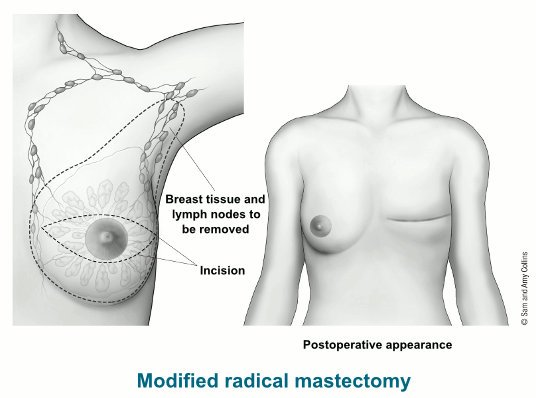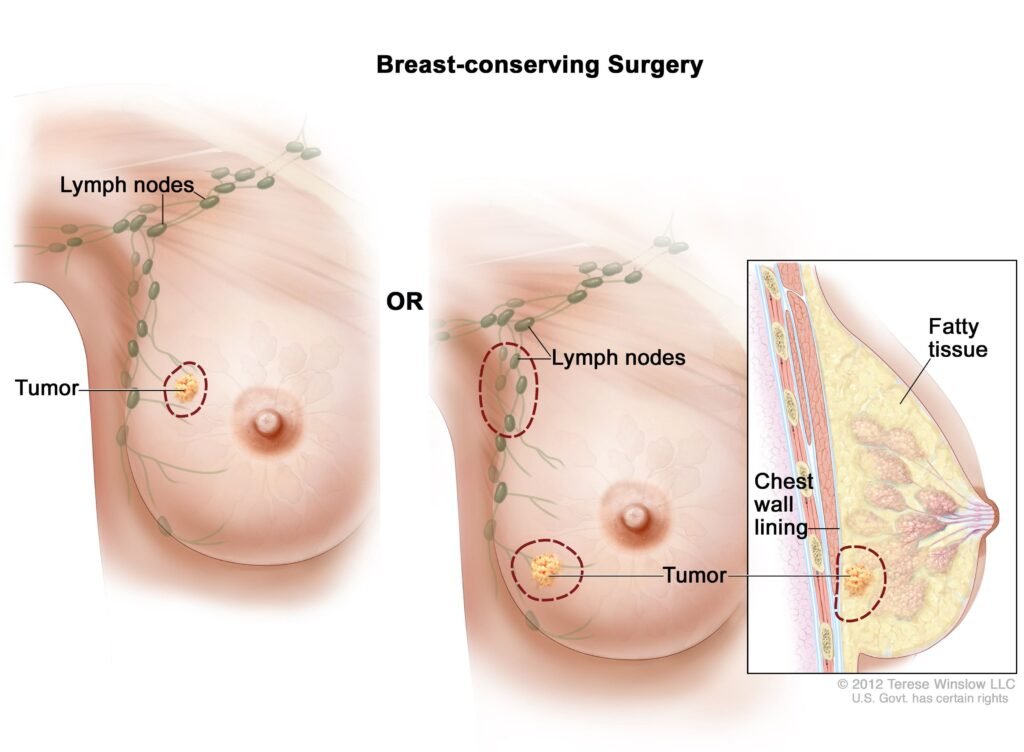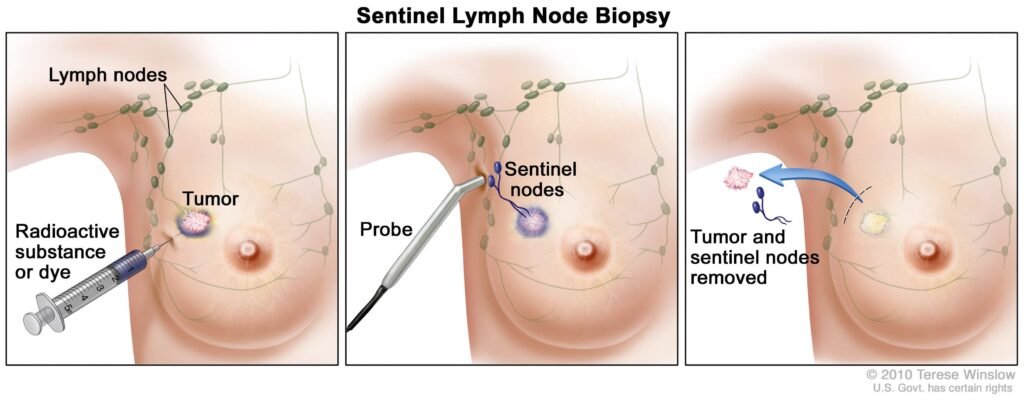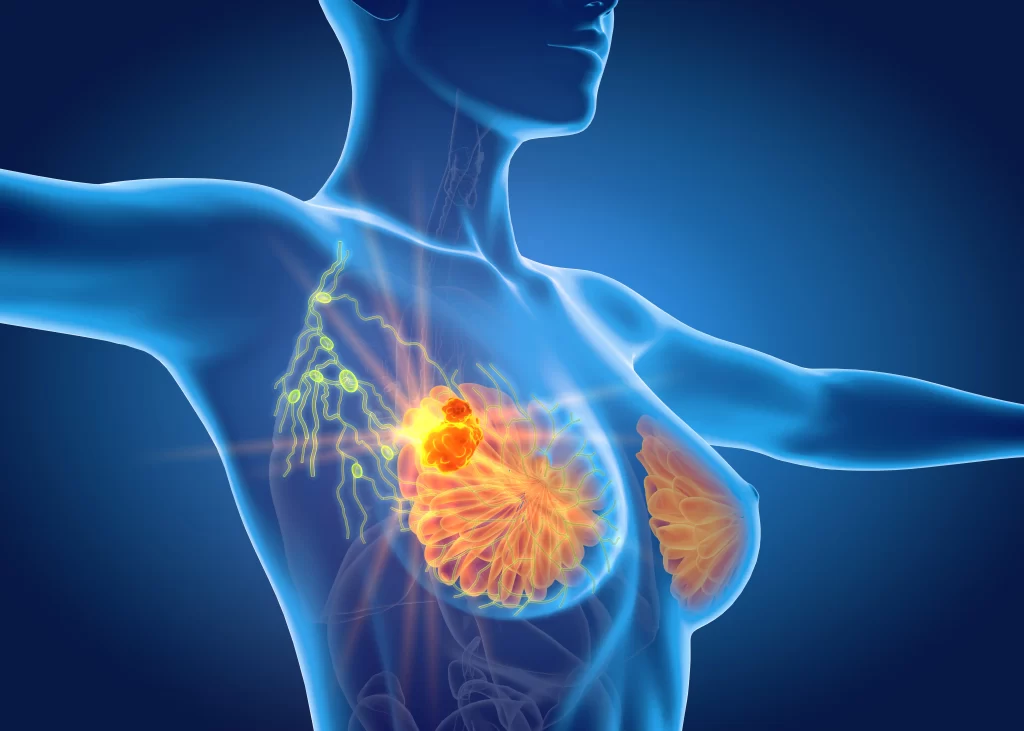Breast Cancer Surgery
Breast Cancer Surgery is considered the primary treatment for breast cancer when it is technically possible to remove the affected tissue.
The type of surgery that your healthcare team recommends for you will depend on many individual factors, including the type of cancer you have, how advanced it is, your general health and your personal preferences. Depending on your condition, surgery may be only a piece of your overall treatment plan, or it may be the only treatment you need.
Types of surgeries for breast cancer:
Mastectomy
Mastectomy, or breast removal surgery, is the most common surgery for breast cancer. That is because mastectomy treats both late-stage and early-stage breast cancers. In addition, some people with an elevated risk of developing breast cancer in the future choose prophylactic mastectomy as a preventative measure.


Lumpectomy - Breast Conserving Surgery
This is an alternative option for treating earlier-stage breast cancer. When the tumour is small and has not spread yet, you can have surgery just to remove the “lump” — the tumour itself. Lumpectomy also removes a margin of the surrounding tissue, just to make sure there are not any stray cancer cells left in your breast.
Lymph node procedures
Sentinel lymph node biopsy
This is an investigative procedure to find out if cancer has spread to your lymph system. The sentinel lymph node is a good indicator because it is the first node that filters fluid draining away from the affected breast. Your surgeon will often perform a sentinel node biopsy during the operation to remove the original tumour from your breast — and sometimes before. They will remove the sentinel node and analyse it for cancer cells.


Axillary lymph node dissection
If the sentinel node biopsy tests positive for cancer, or if your surgeon has other reason to believe you have pervasive cancer in your lymph nodes, they may want to remove a larger portion of lymph nodes to analyse. In an axillary lymph node dissection, your surgeon removes a pad of fatty tissue containing a group of axillary lymph nodes (the lymph nodes under your arm). They will carefully search through the tissue for signs of cancer.
Risk & Benefits
The main purpose of breast cancer surgery is to remove the cancer, which is life-threatening if left untreated. The risks of breast cancer far outweigh the risks associated with the surgery.
Complications:
- Wound infection
- Blood clots
- Seroma
- Lymphedema
- Nerve damage
- Hematoma
Recovery and Outlook
You may be sore and have limited movement in your chest and arms for a few weeks afterward. You will have painkillers to take home with you. You will also be given arm and shoulder exercises to practice daily. These are important to prevent stiffness. You may feel tired for a while. It can take several weeks to regain your former energy levels. You may need someone to help you around the house. Most people can resume their normal activities within about a month.
FollowUp
While you are recovering from your surgery, your healthcare team will be working on lymph node biopsy results. They will want to make sure they have removed all the cancer cells in your body. When they have their results, they will discuss these and your next steps with you. You might need additional follow-up surgery, radiation therapy or chemotherapy as part of your treatment plan.
When to call the Surgeon
Your healthcare team will schedule a follow-up appointment about one to two weeks after your surgery. During your appointment, they will assess your condition, fill you in on any test results and plan the next steps in your treatment plan. Be sure to see your healthcare provider sooner if you experience any strange symptoms or complications following your surgery.
